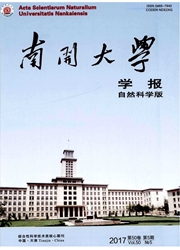

 中文摘要:
中文摘要:
随着我国社会经济的快速发展,大气颗粒物污染逐渐成为影响我国城市居民健康的重要危险因素.以流行病学各项研究成果为基础,参考浓度选取环境空气质量标准(GB3095-2012)的二级浓度限值作为标准,利用泊松回归比例危险模型定量评价可归因于PM10和PM2.5污染的居民健康效应,并结合各健康终端的单位经济价值,采用环境价值评估方法估算相关的健康经济损失.结果表明,目前大气颗粒物污染已对京津冀地区的居民带来了较大的健康危害和经济损失:PM10污染所造成的健康经济损失总额为1 399.3(1 237.1-1 553.1)亿元,相当于2013年该地区生产总值的2.26%(1.99%-2.50%),PM2.5污染引起的健康经济损失总量达1 342.9(1 068.5-1 598.2)亿元,占2013年该地区生产总值的2.16%(1.72%-2.58%),其中慢性支气管炎与早逝是健康损失的主要来源.研究结果可为基于健康效应的大气颗粒物污染控制政策的制定提供一定的参考依据,对控制大气污染、保护人民群众身体健康具有重要意义.
 英文摘要:
英文摘要:
With the rapid development of China’s economy, the atmospheric particulate matter pollution has become an important risk factor for the health of urban residents in China. In this paper, based on the epidemiologyresearch achievement, the secondary concentration limits of Ambient Air Quality Standard(GB3095-2012) is selectedas a standard, andthe quantitative assessment of the inhabitanthealth effects attributed to PM10 and PM2.5pollutioncan be made by the Poisson regression proportional hazard model. Then,in conjunction withthe unit economic valueof the healthy end,the health-related economic losses are estimated by theenvironmental valuation method. The results suggest that the current atmospheric particulate matter pollution has brought greater health hazards and economic lossesto the residents of Beijing, Tianjin and Hebei region: the total healtheconomic losses caused by PM10 pollution is 13.99(12.37-15.53)×104million,equivalent to 2.26%(1.99%-2.50%) of the gross regional product in 2013, and the total healtheconomic losses caused by PM2.5pollution is 13.43(10.69-15.98)×104million, accounting for 2.16%(1.72%- 2.58%)of the gross regional productin 2013,the main source of which is.thechronic bronchitis and premature death.The results of this study can provide some reference for the control policydraft of atmospheric particulate matter pollution in view of the health effects which is importantto the air pollutioncontrol andpeople’s healthprotection.
 同期刊论文项目
同期刊论文项目
 同项目期刊论文
同项目期刊论文
 期刊信息
期刊信息
